When and how to plant a radish?
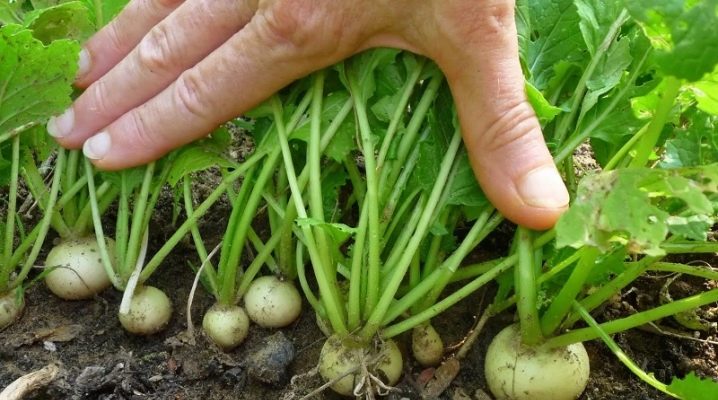
Radish is a very popular vegetable because it has bactericidal properties, contains a lot of protein, as well as a vitamin and mineral complex. In this article, we will take a closer look at when and how to plant a radish, as well as subsequent care.
Timing
Radish is a rather popular root vegetable due to its high content of vitamins. If you plant the radish properly in open ground, adhere to the deadlines, and also provide proper care, then the harvest will pleasantly surprise you. It is quite difficult for inexperienced gardeners to find the time to plant a radish.
You can determine when to plant it, taking into account the region, variety, as well as favorable days according to the lunar calendar.
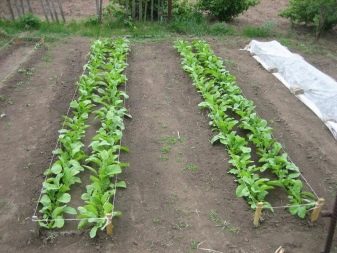
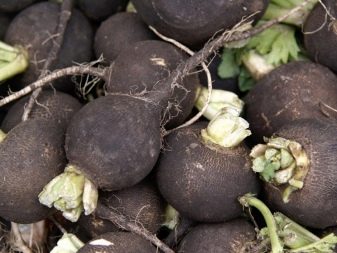
Taking into account the variety and region
Radish is a cold-resistant vegetable. It can be grown in various regions of Russia. Quite often, radish is found in the Moscow region, the middle zone, Siberia and the Urals. This vegetable can be grown anywhere in Russia, except for the Far North. Small sprouts can even withstand frosts down to -3 degrees. In many ways, the choice of the month for planting a radish depends on its variety. Black radish includes two groups of varieties: early (summer), which are immediately eaten, and late (winter), intended for long-term storage.
It is recommended to plant early radish in early spring. All varieties are quite resistant to frost and cold snaps, so even at an air temperature of +3 degrees, you can plant a vegetable. The sprouts grow actively at temperatures from +5 to +10 degrees. If the first shoots appear, this means that after about 2 months it will be possible to harvest. The peculiarity of the root crop is that it grows quite well with a low light day. To choose the right time for planting a radish, you should start from the region and the selected variety.
It is best to start planting early varieties in late April or early May. When the seedlings are about one week old, the air temperature should be + 18– + 20 degrees. Given this feature, it will be possible to calculate the approximate landing time. Some early varieties of black radish can even be planted at the end of March and harvested after 45 days.
It is advisable to harvest the root crop before the end of June, when the day begins to decrease. This rule should be followed in the southern regions, as it is very hot there. Usually, with a long daylight hours, the bushes of the root crop begin to bloom, as a result, the nutrients begin to move to the upper part, the fruits grow small and unsweetened. Winter varieties of black radish ripen for a long time. They are characterized by high resistance to mold and rot.
Usually these varieties are planted so that the roots ripen during the period when the duration of daylight hours is less than 12 hours.
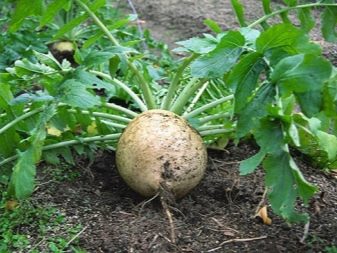

On average, the growing season is 100 days. The longer the radish grows, the higher the keeping quality of these root crops is. It is necessary to harvest the crop before the first frost, if dry weather persists in the fall, otherwise the harvest will have to be harvested faster. Important! Residents of the southern regions can plant black radish in the second half of July or early August.
If you take the Moscow region, it is better to plant a root crop at the end of June. If we consider the green radish, then it is represented by several varieties: early-, mid- and late-ripening.When choosing the planting time for green radish, it is advisable to take into account the climatic zone. So, in cold climates, it is better to plant early maturing varieties, then ripening will be in a warm time. Mid-season varieties can also be planted if they are well cared for.
In warm climates, different groups can be cultivated, but planting times will vary. The best planting time for green radish in the middle lane is the last decade of April or early May. But for storage, it is recommended to plant it at the end of May. If we consider Siberia, then the radish can be sown in early April, and in the Urals - at the end of the month. It is important that the air temperature is already above +4 degrees.
In addition, it is recommended to build on the selected radish variety. Let's consider some of the most popular options.
- "Doctor"... This variety is quite healthy as it does not contain bitterness. Planting time is the second half of June.
- "Chernavka"... This option is very healthy, tasty and juicy. It is desirable to plant it in the second half of July.
- "Night". The variety was popular with its delicate taste and juiciness. This root vegetable is usually eaten fresh. It is recommended to plant the radish at the end of April.
- "Healer"... This variety is characterized by a pleasant, tangy taste. It is mainly grown for fresh consumption. Planting is desirable from mid-June to mid-July.
- "Winter black round". Distinctive features - soft taste, lack of bitterness. This variety is also preferred to be consumed fresh. Planting is best done in the second half of June.
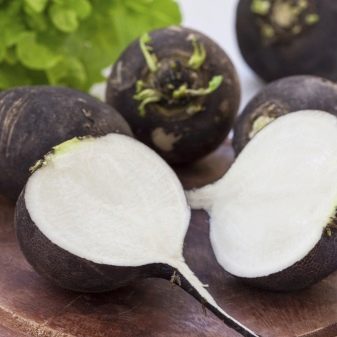

Lunar calendar
Many gardeners take into account the lunar calendar when choosing the time for planting radish. It is recommended to plant the radish when the moon is in the waning phase. But the day of the full moon is an unfavorable day.
Important! If you plan to plant the radish late (late summer or early autumn), then it is better to use a greenhouse. Later, it is not recommended to engage in the cultivation of this root crop. The following are favorable days for planting radish according to the lunar calendar:
- March 1-8, 12, 29-31;
- April 1-5, 8-11, 28, 30;
- May 1,2, 5-10, 27-31;
- June 2-9, 25-30;
- July 1-9, 25-31;
- August 1-7, 23-31;
- 6 September.

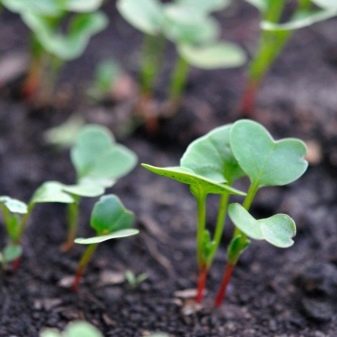
Preparing for landing
In order for the radish to grow and develop well, and then please with a rich harvest, attention should be paid to the preparation of the soil and seed material. It is recommended to plant the radish after the following vegetables:
- corn;
- onion;
- tomatoes;
- cucumbers;
- pumpkins;
- legumes;
- pepper;
- Dill.
Important! After crucifers, radish should not be planted, since the chances of contracting common diseases are significantly increased.
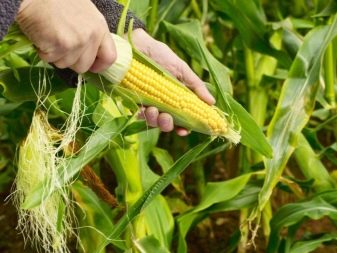
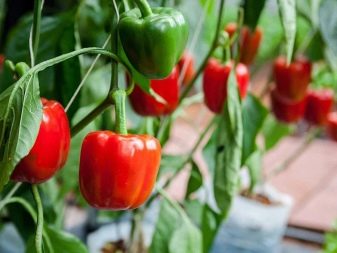
Seat selection
It is advisable to choose a sunny flat area for planting radish. It should be borne in mind that this root crop cannot tolerate high humidity, so it is advisable that groundwater passes away from planting. Radish can be planted both in single plantings and alternated with other vegetables. It is advisable to use fertile, loose, slightly alkaline, loamy or sandy loam soils. But in swampy and low-lying places, it will not be able to give a good harvest, since in such areas there is usually rather poor drainage, and groundwater also passes close by.
The soil should be prepared in the fall. The soil must be dug up, while feeding it with humus or compost, as well as mineral fertilizers. The following fertilizing will be required per square meter:
- 3-4 kg of compost or humus;
- 20-30 grams of ammonium sulfate;
- 30-40 grams of potassium chloride;
- 40-50 grams of superphosphate.
Important! It is recommended to alkalize soils with high acidity using hydrated lime, chalk or dolomite flour.

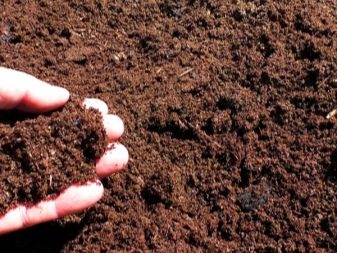
The soil
Radish grows well on fertile loam with a neutral acidity level. To find out this level, you should purchase special litmus tests at the agricultural store. Although you can apply folk methods, namely:
- a little soil, water and soda are poured into the container - if it is acidic soil, then it will begin to bubble and hiss;
- it is necessary to mix a handful of earth with vinegar - the absence of bubbles and hiss will signal high acidity.
As you know, radish does not like high acidity. On such land, root crops often get sick, are stored a little, and quickly begin to rot. Such land should be supplemented by the introduction of ash, chalk or dolomite flour. And in heavy and dense soil, it is recommended to add sand. The radish can be planted near other vegetables. Its neighbors on the same bed can be beans, cucumbers, carrots, beets, spinach. It grows well next to cabbage, melon and tomato.


How to plant correctly?
Planting a radish is easy enough. Her landing pattern is as follows:
- prepare the ground and form a bed;
- choose cloudy weather without wind to sow seeds;
- furrows must be formed on the garden bed, while maintaining a distance of 30–35 cm;
- furrows must be watered with warm water, wait for it to be absorbed;
- sowing must be carried out to a depth of 2.5 cm;
- maintain a distance of 15 cm between seeds;
- seeds should be covered with dry soil and compacted;
- further, the bed is covered with agrotextile, which is removed when the first shoots appear;
- after removing the agrofibre, it is imperative to pollinate the bed with ash in order to protect the seedlings from pests.
Important! Planting seeds in the soil can be made thicker, the number of seeds can be increased or the interval between them can be changed.
Some gardeners fall asleep 1 seed for every 5 cm, or 3 seeds for every 15 cm at once. When shoots appear, they are thinned out, the strongest are left. The seeding rate of radish per 1 ha is 2.5–3 million seeds, or 18–25 kg.
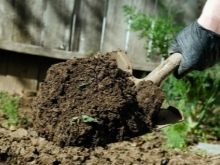


Follow-up care
Radish is not very whimsical to care for, but the quality of the crop will depend on it. To properly care for the radish, it is necessary to water and thin it, as well as loosen and feed the soil. Let us dwell on these points in more detail.
- Watering... In many ways, the weather and the condition of the sprouts are of decisive importance. If it rains regularly, then additional watering is not needed. In hot summers, it is recommended to water the radish frequently. Under normal conditions, a radish needs watering twice a week, 10 liters of water are used per 1 square meter. With the emergence of seedlings, during the growth of the tops or the growth of the root crop, the amount of watering increases. When the radish is fully formed, watering should be completely stopped, because with high humidity, the root crop can begin to crack, which will negatively affect the period of its storage. For irrigation, settled clean water is used. It must be poured at the root, while twice a day - in the morning and evening.
- Loosening and hilling... After watering, the soil needs to be loosened. Only loosening allows air to penetrate the roots. When they grow up, their tops rise above the ground. They do not need to be hilled. Loosening is carried out when a crust appears on the ground after irrigation. It is advisable to loosen the soil between the furrows to a depth of 5 cm.
- Top dressing... Mineral fertilizers help in the growth of the radish. If the gardener prefers organic fertilizing, then, for example, herbal infusions can be used. Rotted organic matter or ash is a good feeding. On average, it is recommended to feed the early varieties only 2 times, and the later ones - 3 times. The first fertilizer can be applied when 2 leaves are formed on the sprout, and then it is recommended to fertilize at regular intervals. A month before harvesting, feeding should be stopped.
- Thinning... When the sprouts have hardened a little, they must be thinned out. The next thinning is done when there are already two full-fledged leaves on the sprout. There should only be one plant in one hole.If the radish was planted in the grooves, then the distance between the shoots remains 10-15 cm. It is recommended to pluck only the upper part, since pulling out from the root can damage the second shoots.
- Cleaning and storage. Early varieties are harvested in summer. They are not intended for long-term storage. Usually the shelf life is up to three weeks in the refrigerator. Late varieties are usually harvested before the first frost. This period usually falls at the end of September. The radish is pulled out of the ground, the remnants of the earth, as well as small roots, are removed. The tops are cut off, while trying not to damage the fruit. Then the roots are dried and moved to a cool room for storage. For the winter, only strong root crops are preserved without damage. They are placed in boxes and covered with sand. The storage temperature should be +3 degrees, and the humidity should be 80–90%. In addition, you can store the radish in half-open plastic bags. If the storage conditions are properly ensured, then the root crops will lie until spring.
The agrotechnology of radish does not cause any particular difficulties if you follow the above recommendations from experts. Growing root crops does not need to be given both increased attention and high costs.
Radish seeds germinate quite well, the harvest can be obtained both in summer and in autumn, depending on the selected variety. Care rules will protect the radish from various diseases and pests.
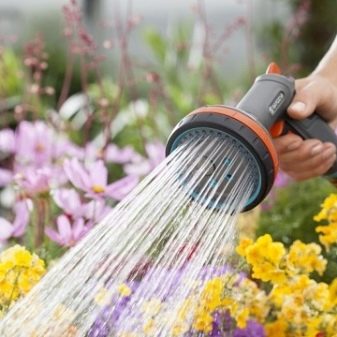
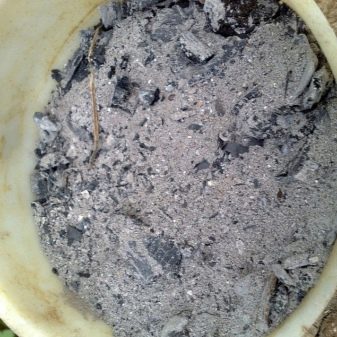













The comment was sent successfully.